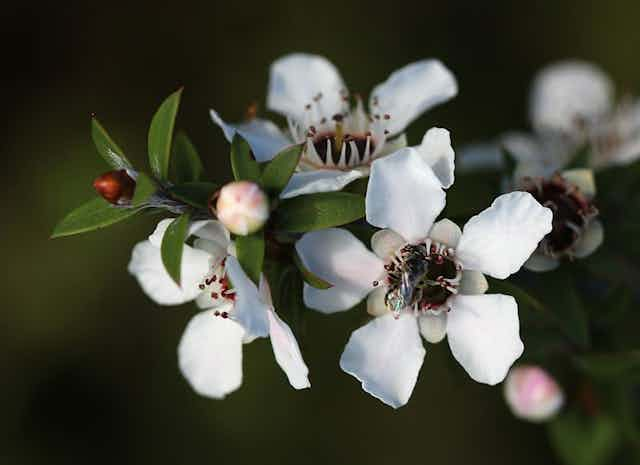Manuka honey could prevent serious urinary tract infections caused by catheters – tubes used to drain patients’ bladders, new laboratory research has found.
The research showed honey from New Zealand’s manuka plant slows the speed of bacterial growth and formation of biofilms, which are thin layers that build up on surfaces and harbour infection.
The investigators used the findings, published in the Journal of Clinical Pathology, to suggest flushing diluted manuka honey through the catheter may help prevent urinary tract infections.
Urinary tract infections can be life-threatening. They account for 40% of hospital-acquired infections, while catheter-associated urinary tract infections make up 80% of this group.
But the researchers stressed this study was performed in a laboratory. Significantly more testing was needed before the honey could be used to treat infections in humans.
The director of the infectious diseases and microbiology department at Austin Health, Lindsay Grayson, said the research was a “quirky” take on the role honey could play.
Manuka honey’s antimicrobial effects are well understood, but Professor Grayson, who was not involved in the study, said it was interesting because not much was known about its effect on biofilm.
“Biofilms are critical because these bugs form this slimy layer and then they’re able to live quite comfortably in a dormant or semi-dormant state,” he said.
Professor Grayson said the biofilm protected bacteria and delivering antibiotics through it to treat infection was difficult.
“It might then allow antibiotics that otherwise wouldn’t have been able to get in there to now get into the bugs.”
Australian National University professor of infectious diseases Peter Collignon, who was also not involved in the study, said research that looked at ways of controlling infections other than using antibiotics was a good idea. But he said this study was limited in its practical application.
The latest research only assessed formation of biofilm and bacterial growth, not whether using honey allowed antibiotics to penetrate the biofilm more effectively.
Researchers added various concentrations of manuka honey diluted in distilled water to laboratory growth plates containing two bacteria known to cause urinary infections and incubated them for 24, 48 and 72 hours.
They then compared the growth of biofilms in each of the plates to control plates that had bacteria but no manuka honey.
“The further research that needs to be done is to see whether this actually works for what is proposed,” Professor Collignon said.
“In other words, can this objectively decrease the amount of infections that are occurring in the urinary tract?”
Properly controlled clinical trials are needed to avoid the risk that laboratory data could be misinterpreted in the real world and that patients could be given false hope, said Professor Collignon.
“I think the major risk is maybe people being taken advantage of financially because it [manuka honey] is relatively expensive compared to other substances,” he said.
Professor Grayson said he was concerned about the lack of safety data for using diluted honey, either on catheters or in flushing the bladder, because it could be an irritant.
“If honey contacting the bladder wall did cause cellular irritation and inflammation, then that in and of itself sets up a higher risk of infection,” he said.

